 |
 |
 |

NSF Science of Learning Centers Graduate and Look to the Future
This was a graduation like no other. During the week of February 8, 2016, the National Science Foundation (NSF) and its six Science of Learning Centers (SLCs) met in Washington D.C. to celebrate the extraordinary success of the SLC program. Funded for the past decade by the NSF, these pioneering Centers were created for the express purpose of deepening our understanding of learning. The research coming out of the SLCs has had a profound effect on views about learning.
Click here to read NSF's "Ten takeaways from ten years of the Science of Learning Centers," to learn more about what occurred at the graduation, and to find out the latest Sustainability efforts as the Centers head into the future. More  |
Let's Face It (LFI!) Scrapbook App is Launched!
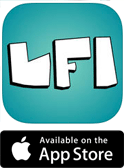 TDLC's Jim Tanaka at the University of Victoria and his team have officially launched their Let’s Face It (LFI!) Scrapbook on the Apple iTunes Store (2/7/16). The free app is a powerful educational tool to help people learn faces and recognize emotions of the important people in their lives. TDLC's Jim Tanaka at the University of Victoria and his team have officially launched their Let’s Face It (LFI!) Scrapbook on the Apple iTunes Store (2/7/16). The free app is a powerful educational tool to help people learn faces and recognize emotions of the important people in their lives.
The player uses the iPad's built-in camera to take pictures and videos of their friends, family and classmates. The player labels the images and organizes them into personalized albums that 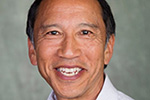 provide content for the LFI! games. The platform includes four challenging games (Splash, NameGame, Memory and Fuse) that have uniquely themed levels, and even a few hidden tricks! provide content for the LFI! games. The platform includes four challenging games (Splash, NameGame, Memory and Fuse) that have uniquely themed levels, and even a few hidden tricks! Learn about the app; Learn about the app; iTunes Preview; iTunes Preview;  Article: Scrapbook app helps those with autism learn faces, emotions (CBC, 2/11/16) Article: Scrapbook app helps those with autism learn faces, emotions (CBC, 2/11/16)
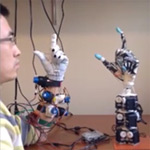 This Remarkable Robot Hand Is Worthy of Luke Skywalker This Remarkable Robot Hand Is Worthy of Luke Skywalker
TDLC investigator Emanuel Todorov at the University of Washington, along with Yale postdoc Joseph (Zhe) Xu, have engineered a robot hand that closely mimics the natural design and structure of a human hand. The robot hand can be remotely manipulated by a person wearing a sensor-laden glove, and is capable of the same grips and hand positions humans are. More  (SingularityHUB, 2/18/16) (SingularityHUB, 2/18/16)
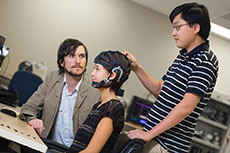 Brain monitoring takes a leap out of the lab (UC San Diego, 1/12/16) Brain monitoring takes a leap out of the lab (UC San Diego, 1/12/16)
Bioengineers and cognitive scientists have developed the first portable, 64-channel wearable brain activity monitoring system that’s comparable to state-of-the-art equipment found in research laboratories. Drs. Scott Makeig and Tzyy-Ping Jung (SCCN) are co-authors of the study, as is TDLC's Tim Mullen and INC Co-Director Gert Cauwenberghs.
(Photo credit: Jacobs School of Engineering, UC San Diego).
Read the article IEEE Publication IEEE Publication 
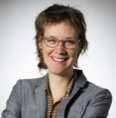 Exciting Findings Emerging from UCSD's Cognitive Development Lab Exciting Findings Emerging from UCSD's Cognitive Development Lab
A recent TDLC-supported study, headed by former UC San Diego graduate student and TDLC trainee Kaya de Barbaro, could change how people view social development in the first year of life.
The team discover a novel way of thinking about how infants learn to participate in social interactions: Expanding sensorimotor skills open the doors for more elaborate social games. Unlike older theories that posited innate “mind-reading” skills, these findings suggest that infants’ day-to-day experiences and slow-growing physical skills are crucial for coordinating their actions to interact effectively with adults. Click here to read the study recently published in Child Development!
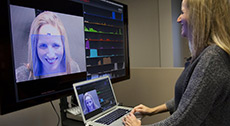
Apple Buys San Diego Emotion-Recognition Startup
Emotient technology is used to assess emotions by reading facial expressions (KPBS, 1/8/16).
Also: Apple buys San Diego artificial intelligence startup (The San Diego Union-Tribune, 1/8/16). More
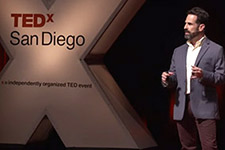 Dr. John Iversen's TEDx Talk is now available! Dr. John Iversen's TEDx Talk is now available!
TDLC's Dr. Iversen presented a TEDx talk on October 17, 2015, at Symphony Hall in San Diego. In his presentation, "Does Music Change a Child's Brain?" he discussed the SIMPHONY project, an "ambitious collaborative longitudinal study of the impact of music training on brain and behavioral development."
Click here to view the talk 
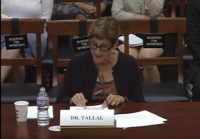 TDLC Researchers Advocate for Science of Learning in Washington DC (2015-16) TDLC Researchers Advocate for Science of Learning in Washington DC (2015-16)
In June and September 2015, Temporal Dynamics of Learning Center (TDLC) scientists and trainees met with various elected officials and federal agency leadership to advocate for support for Science of Learning research, training, translation and Science, Technology, Engineering and Math (STEM) education and diversity initiatives. More 
TDLC Fellows Retreat and All Hands Meeting
TDLC's annual Fellows Retreat and All Hands Meeting (AHM) occurred on January 21-23, 2016. The event was filled with two days of interesting talks and breakout sessions, beginning with Dr. Rusty Gage's opening Keynote, "Recent advances in the study of Adult Neurogenesis." Click here to vew the Agenda!
|
|

|
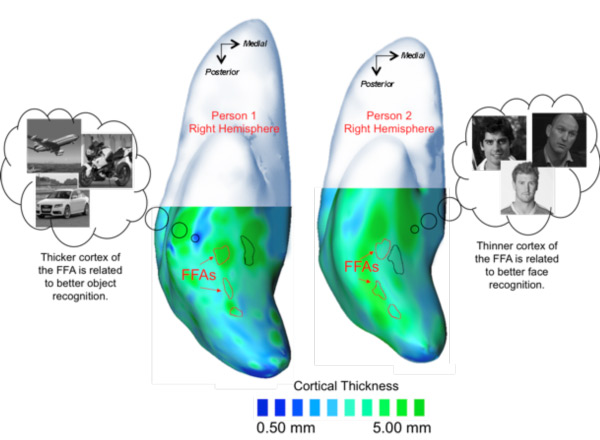
Thickness of Cortical Grey Matter Predicts Face and Object Recognition
Sophisticated techniques allowed for segmentation of human grey matter and estimates of regional cortical thickness. Individual differences in the cortical thickness of pea-sized regions in the inferior temporal could be predicted by behavioral recognition performance on faces and objects. While subjects with a thicker cortex performed better with vehicles, those with a thinner cortex performed better with faces and living objects.Click here to read more about this and other TDLC 2015-2016 Highlights 
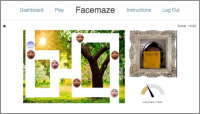 Training Facial Expressions in Autism Training Facial Expressions in Autism
Individuals with Autism Spectrum Disorder (ASD) learn to produce accurate facial expressions and remediate expression skills by playing FaceMaze-- a fun, gamified expression training platform utilizing real faces and Emotient's real-time facial expression recognition feedback. After FaceMaze training, preliminary analysis shows that participant improve in their abilities to perceive and produce facial emotions. Click here to read more about this and other TDLC 2015-2016 Highlights 
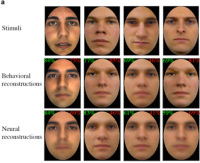 Understanding the neural code that supports the individuation of similar faces Understanding the neural code that supports the individuation of similar faces
Researchers from Carnegie Mellon University have shown that it is possible to reconstruct a novel face image based on the observer's behavioral or neural response to a very large set of homogeneous faces (Nestor, A., Plaut, D. C. and Behrmann, M.). From a practical perspective, these findings make possible a broad range of image-reconstruction applications via a straightforward methodological approach and, from a theoretical perspective, the current results provide key insights into the nature of high-level visual representations.Click here to read more about this and other TDLC 2015-2016 Highlights 
|
|
|
| |
| |
|
This message was sent from:
The Temporal Dynamics of Learning Center (TDLC.UCSD.EDU)
University of California, San Diego,
9500 Gilman Drive, La Jolla, CA 92093
To learn more about TDLC, please visit us on the web at: TDLC.UCSD.EDU
Please contact webmaster@tdlc.ucsd.edu to unsubscribe.
TDLC is a Science of Learning Center (SLC),
one of six SLCs funded by the National Science Foundation. NSF grant #SBE-0542013
|
|
 |
 |
Feb/March 2016 |
|
 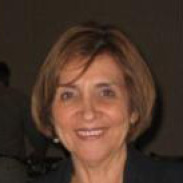
TDLC's The Educator Network (TEN)
Recent
Discussion:
Frequent Testing
A TEN member discusses an article in Scientific American: "Researchers Find That Frequent Tests Can Boost Learning;
Too often school assessments heighten anxiety and hinder learning. New research shows how to reverse the trend." The member started a discussion on the TEN forum to gain feedback from others on the subject.
|
|
|
 |
 |
Beam Me Up, Scotty? Turns Out Your Brain Is Ready For Teleportation
(NPR Research News, Your Health,02/26/16)
Dr. Gyorgy Buzsaki is quoted. More 
|
 |
$2M for lasers to map the brain (Univ. of Michigan, 1/29/16)
TDLC's Dr. György Buzsáki is co-investigator (with Drs. Euisik Yoon and Kensall Wise at U-M) in the $2 million grant that is part of the Brain Research through Advancing Innovative Neurotechnologies (BRAIN) initiative. More 
|
 |
Salk study expands brain memory capacity estimate
TDLC's Dr. Terry Sejnowski is senior author of the study.
(The San Diego Union-Tribune, 1/19/16). More Click here for eLIFE publication Click here for eLIFE publication
|
 |
Brain monitoring takes a leap out of the lab
(UC San Diego, 1/12/16) More
IEEE Publication
|
 |
Penn State scientists working new drug target could help treat Rett Syndrome (1/11/16)
Scientists have discovered a new drug target that could help treat Rett syndrome, a severe autism-spectrum disorder, as well as other neurological diseases that have similar symptoms. TDLC's Dr. Fred Gage collaborated on the study. More
PNAS Article
|
 |
Apple Buys San Diego Emotion-Recognition Startup
Emotient technology is used to assess emotions by reading facial expressions (KPBS, 1/8/16)
More
|
 |
Seeing through the eyes of an expert: What can we learn from the way experts see the world? (Science Line, 1/2/16) TDLC's Drs. Jim Tanaka and Michael Tarr featured in article about perceptual expertise. More
|
 |
RUBI mentioned in the San Diego Union-Tribune (1/1/16)
Kathryn Owen, director of the Early Care and Education Center at UC San Diego, is interviewed, and discusses the use of RUBI robot to explore interactive technology as a way to teach children. More
|

|
Myth: The bigger your brain, the smarter you are.
The Truth: "Having a bigger brain does not guarantee more cognitive power. Although many believe humans are the smartest species on the planet, our brains — which weigh roughly three pounds — are dwarfed by other animals. For instance, the elephant brain weighs about nine pounds; the whale brain can weigh up to 20 pounds.
What then makes the human brain special? Most scientists agree that we owe our unique capabilities to the complexity of the cerebral cortex, the outer layer of the brain that is responsible for awareness, planning, and reasoning. With 16 billion neurons, the human cerebral cortex has the most neurons of any in the animal kingdom, and each neuron can form tens of thousands of synapses with other neurons. These neurons and their connections are supported by specialized cells called glia, which are also believed to play an important role in human cognition."
More  (*Taken from: BrainFacts.org) (*Taken from: BrainFacts.org)
|
|
|
|
 |

![]()
